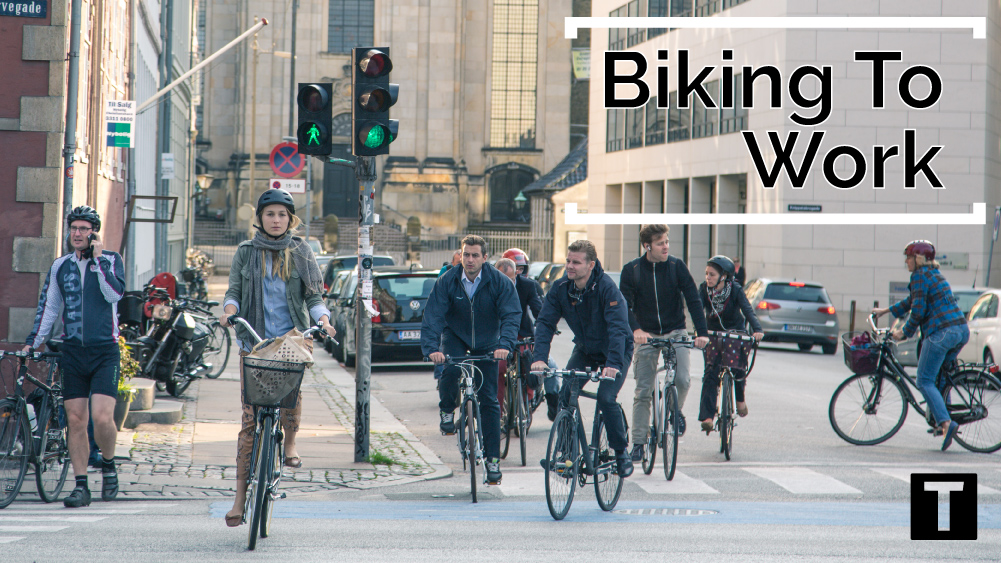There are lots of great reasons to bike to work. Health, including fresh air, exercise, and heightened mental awareness are just a few of the obvious benefits of the self-powered commute. As Twitter celebrates Bike to Work Day today, a few of the difficulties many people face in actually planning to bike to work every day should be considered.
Riding a bike to work is not something anybody in a professional environment can do on a whim. If you are going to pedal in to work without a real plan, you’re gonna have a bad time. Sweat, wind, dirt, and many other factors complicate this process, and even if you live close to your place of work, there’s a lot to consider.
If you make the decision that you want to ride to work, here is a list of things you should think about before even hitting the road:
- Do you have a bike? If yes, is it tuned up? You need to check tire pressure, gear lubrication, brakes, lights, your bell, and any other accoutrements you might need or want.
- There’s a lot of bike gear. What about your helmet, bike shorts, layers in case it’s cold in the morning, proper shoes that can get a little beat up, sunglasses for glare and dust protection, gloves (for warmth and bumpy rides), water bottles, and anything else you can think of.
- Can you wear your work attire on the bike? If you work in a business with a uniform or dress code, will you be able to ride without getting your work clothes dirty? If not, you’ll need to bring a change of clothes, and preferably not have them get wrinkled.
- Does your place of business have bike parking nearby? Is it safe? Do you have a proper lock or bike storage facility?
- How long is the ride, and does your place of work have showers or facilities where it would be easy to clean up for work if you’re sweaty on the other end? Can you leave toiletries, a towel, or any clothing at work, in a place where it will stay safe and clean?
- Is the weather cooperating with you today? If it’s raining, that’s a whole other consideration, and if you live in a place with unpredictable weather, a flash rainfall while biking can really ruin your morning.
The place you work can be very supportive of biking to work, but it still won’t be easy to just roll out of bed in the morning without lots of planning. If you drive or take the bus to work, you can probably just get ready at home, and the odds of forgetting an essential piece of clothing or accessory are small. When you bike to work, if you forget a shirt, it’s a big problem. There are ways to reduce these risks if you’re forgetful, but it’s still something to think about.
Now that you’ve thought through your plan and everything is ready to go, you have to actually get on your bike and go. When was the last time you rode your bike? Was it last season? Do you remember how to do it? What about hand signals for turning, are you even comfortable taking your hand(s) off the handlebars?
For many amateur cyclists, biking on the street is a daunting proposition, especially during rush hour. While bike friendly cities can do a lot to support their ridership, the odds are good that you’ll have to interact with a car at some point on your commute. If you’ve biked through a city, you’re well aware of problem areas, especially on older roads. Most drivers aren’t too familiar with the one meter strip on the side of most roadways, but it’s not exactly conducive to a smooth ride on many city streets.
#BikeToWorkDay is a really great initiative, and it goes a long way towards highlighting the reasons getting to work by bicycle is fun and exciting. However, it’s one thing for politicians and people who bike to work one day a year to get through that experience, it’s another thing altogether to consider making it a part of your lifestyle.
Consider pulling your bike out of the garage more often if you can, and please try to show some empathy for commuting cyclists as you pass them in your cars today (and every other day). They are just trying to get home safe, like you.


